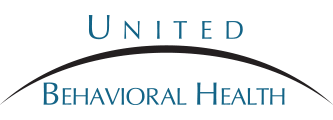Not everyone experiences autism the same way. Understanding the signs, symptoms and effects of autism is an important step toward recovery for your child.
Understanding Autism
Learn about autism
Children who display deficits in communication, have difficulty interacting socially, present with repetitive behaviors, and have interests that are restrictive in nature are likely showing symptoms synonymous with autism spectrum disorder. A neurodevelopmental condition that occurs early in a young person’s life, autism spectrum disorder is a mental health disorder that is often initially noticed by caregivers. The severity of this disorder is reliant on the level of impairment that a child displays in terms of his or her ability to communicate and adjust to new patterns of behavior.
Young people with this disorder often possess medical concerns that could exacerbate symptoms of this disorder. Additionally, it is common for a youth to meet diagnostic criteria for another mental illness as well. What is important for parents and caregivers to know is that early intervention can greatly improve the lives of these youth. Seeking and receiving an appropriate diagnosis from a qualified mental health professional can help identify which therapeutic interventions will best suit the youth’s needs. Those who engage their child in autism treatment can expect their child to acquire improved communication skills, methods for coping with change, and training on how to react and respond to others in social settings. The sooner this type of care is implemented, the sooner a child and his or her caregivers can gain the tools needed to live a happy life.
Statistics
Autism statistics
Through extensive research, it has been concluded that more male children and adolescents (one in every forty-two) are diagnosed with autism spectrum disorder than female children and adolescents. Furthermore, the Centers for Disease Control and Prevention (CDC) reports that one in sixty-eight youth under the age of eighteen meet diagnostic criteria for this condition.
Causes and Risk Factors
Causes and risk factors for autism
Researchers are still in the process of trying to find an isolated cause for autism spectrum disorder. In the meantime, developmental experts agree that genetics, environmental factors, and other risks contribute to the manifestation of this condition in certain individuals. Consider the following:
Genetic: Studies conducted on the genetics of individuals with autism spectrum disorder have produced findings that suggest that there are more than 100 genes that can contribute to the development of this disorder. Additionally, if a youth has an older biological sibling with autism, there is an elevated risk that that youth will also develop autism symptoms as well. As a result of these findings, it can be said that genes play a role in the development of autism spectrum disorder.
Environmental: The environmental influences that can impact the onset of autism spectrum disorder mainly occur before a child is born. Exposure to certain medications and pesticides can cause a child to develop symptoms synonymous with autism spectrum disorder. Additionally, babies who experience trauma during the birthing process or who are born with low birth weights have an increased likelihood for displaying symptoms of this condition as they grow and develop.
Risk Factors:
- Being male
- Low birth weight
- Fetal exposure to valproate (medication prescribed to treat seizures or mood disorders)
- Prenatal exposure to pesticides
- Maternal illness during pregnancy
- The presence of certain health conditions, such as Fragile X syndrome, tuberous sclerosis, muscular dystrophy, Down syndrome, Rhett syndrome, and cerebral palsy
- Having parents of advanced age
- Complications during birth
Signs and Symptoms
Signs and symptoms of autism
The signs of autism spectrum disorder can vary depending on the severity of the symptoms present. Parents and caregivers should note the presence of any of the following signs and symptoms and consult with a mental health professional to conclude a definitive diagnosis so that treatment can be implemented to increase the youth’s functioning:
Behavioral symptoms:
- Not meeting language milestones
- Not responding when being called
- Emotional outbursts in inappropriate situations
- Physically aggressive outbursts
- Turning away when others attempt to touch him or her
- Engaging in repetitive behaviors
- Self-harming behaviors
- Monotonous speech patterns
Physical symptoms:
- Hypersensitivity to touch
- Flat affect
- Lack of coordination
- Sleep disturbances
- Hypersensitivity to sounds
Cognitive symptoms:
- Ruminating thoughts
- Developing fixations on objects or activities
- Hindered ability to organize
- Inability to interpret social cues
Psychosocial symptoms:
- Drastic shifts in mood
- Anxiety
- Low self-esteem
- Inability to adjust to change
- Lack of emotional expression
- Unwillingness to cooperate
Effects
Effects of autism
The long-term effects of having autism spectrum disorder can vary. Depending on the co-occurring medical conditions and psychiatric disorders present, along with the number of impairments that hinder functioning, the following effects may or may not occur in a person’s life:
- Development of another mental health condition
- Decreased ability to care for oneself
- Loss of verbal skills
- Social isolation
- Difficulty forming and maintaining relationships with others
Co-Occurring Disorders
Autism and co-occurring disorders
Autism spectrum disorder commonly occurs alongside medical conditions. Furthermore, those who meet diagnostic criteria for autism spectrum disorder are likely to display symptoms synonymous with additional mental health conditions. The following disorders are those that are frequently found in individuals with autism spectrum disorder:
- Intellectual disability disorder
- Language disorders
- Attention-deficit/hyperactivity disorder
- Developmental coordination disorder
- Anxiety disorders
- Depressive disorders









